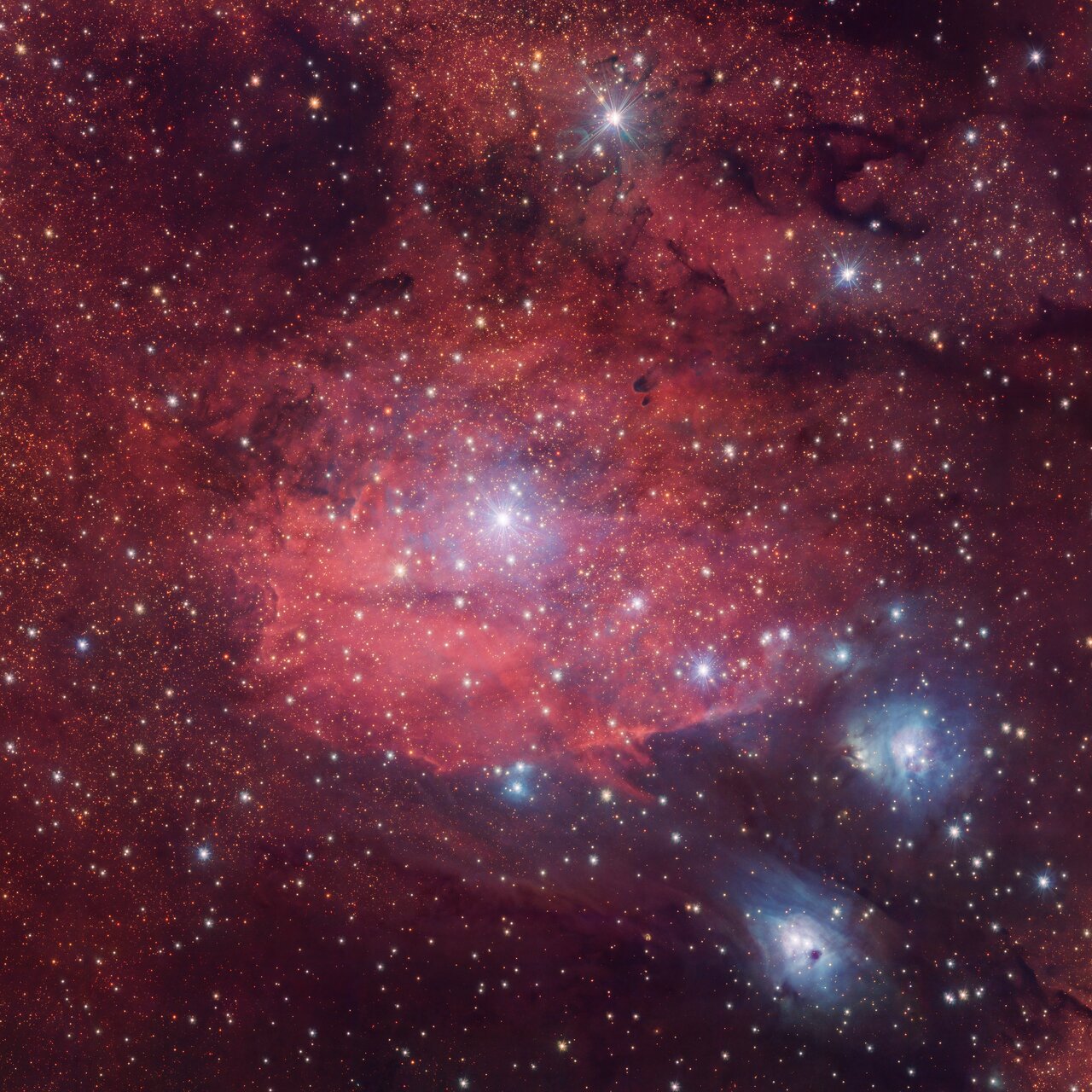Cosmos IC 1284
There are two different types of nebulae brought to you in this Picture of the Week. Each appears with a distinct colour in the visible sky and are captured here using the wide-field camera OmegaCAM on the VLT Survey Telescope (VST), hosted at ESO’s Paranal Observatory in the Chilean desert.
The large, bright emission nebula at the centre, IC1284, is a star-forming region composed primarily of hydrogen. Its rosy glow comes from electrons within the hydrogen atoms: they’re excited by the radiation from young stars, but then they lose energy and emit a specific colour or wavelength of light. One of the filters on OmegaCAM lets through this particular reddish colour, hence the nebula’s look. Meanwhile, another colour filter highlights the blue reflection nebulae NGC6589 and NGC6590 in the lower right corner. The dust in a reflection nebula preferentially scatters shorter, bluer wavelengths of light from nearby stars, which is what gives these nebulae their eerie glow. It’s the same reason why the sky is blue!
The frame of this image covers an area roughly equivalent in the sky to a full Moon. This image was captured as part of a large ESO public survey, the VST Photometric H alpha Survey of the Southern Galactic Plane and Bulge (VPHAS+), which observes nebulae and stars in visible light to help astronomers understand how stars are born, live and die.
